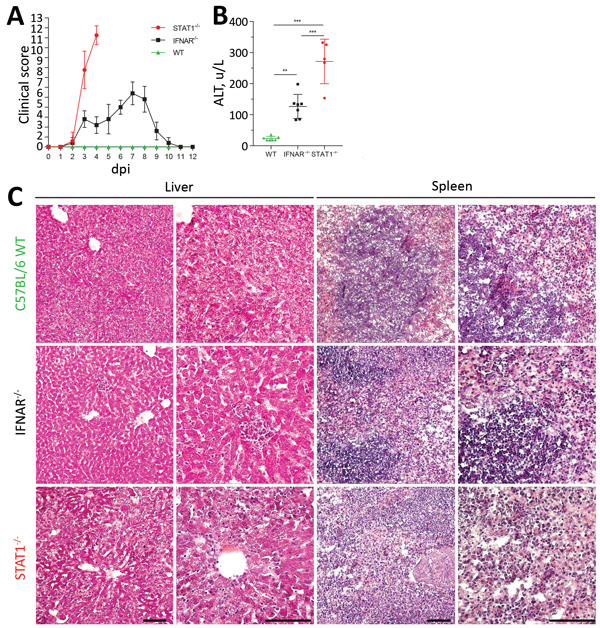Volume 25, Number 7—July 2019
Research
Essential Role of Interferon Response in Containing Human Pathogenic Bourbon Virus
Figure 4

Figure 4. Pathology of BRBV-infected mice. A) B6 WT, IFNAR−/−, and STAT1−/− animals (n = 5 for each group) infected intraperitoneally with 100 PFU of BRBV and monitored daily for weight and clinical signs (mean +SD); scoring system described in Appendix Table. B) Serum samples of infected B6 WT (n = 7), IFNAR−/− (n = 7), and STAT1−/− (n = 5) animals harvested at day 4 and analyzed for ALT (mean +SD). Statistical analysis was performed with a 1-way analysis of variance (Tukey multiple comparison test). C) Histologic results showing inflammatory organ damage at 4 dpi. Organs were fixed in 4% formaldehyde and embedded in OCT medium (Tissue-Tek; Sakura, https://www.sakuraus.com); cryosections were then stained with hematoxylin and eosin. Scale bars indicate 100 µm. ALT, alanine aminotransferase; BRBV, Bourbon virus; dpi, days postinfection; IFNAR, type I interferon receptor; WT, wild-type. ***p<0.001; **p<0.01.